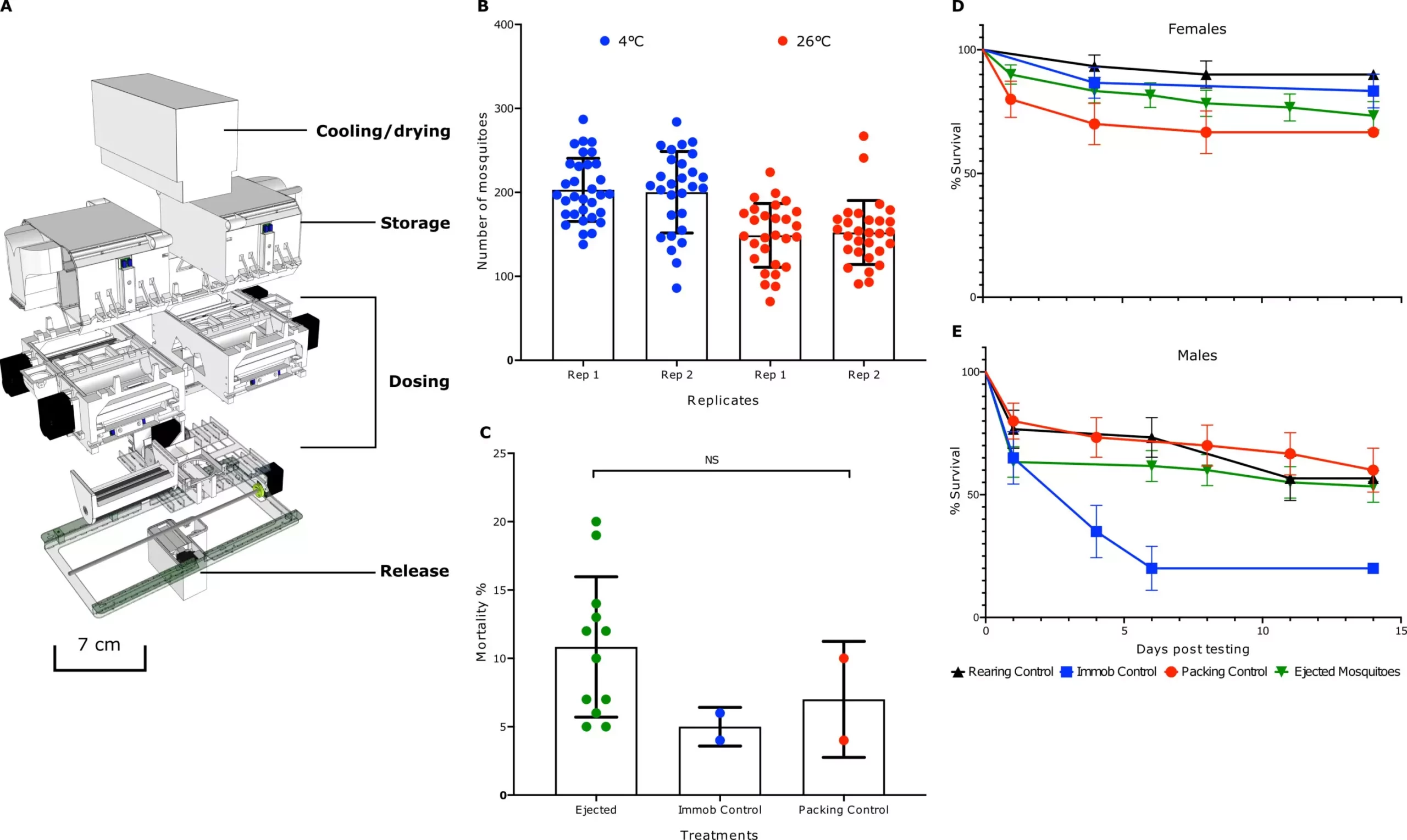In recent years, the increasing incidence of mosquito-borne diseases has urged scientists and health officials to seek innovative solutions that extend beyond conventional pest control methods. An international collaboration spearheaded by the World Mosquito Program stands out as a paradigm shift—a blend of microbiology, robotics, and environmental management aimed at mitigating the threat posed by disease-carrying mosquitoes. By harnessing the power of automation through drones, this research team has developed a method to release infected mosquitoes more efficiently than any prior strategy. This groundbreaking advancement not only promises to save lives but also transforms our understanding of ecological interventions against viral diseases.
Unlocking The Potential of Bacterial Infestation
At the heart of this endeavor is the utilization of specific bacteria known to infect and incapacitate mosquito populations. Scientists have long recognized that traditional efforts to control mosquito numbers—often involving the breeding and manual release of infected specimens—are fraught with logistical hurdles, inefficacies, and the potential for human error. Research has consistently revealed that these traditional methods fail to achieve the widespread impact desired. Enter the revolutionary approach of using bacteria to infect mosquitoes, rendering them innocuous and, in some cases, reducing their reproductive capabilities. This targeted intervention is a pivotal step toward building resilient ecosystems while protecting human health.
A New Paradigm: Automated Aerial Release Systems
In a significant leap forward, the research team has crafted a specialized drone system designed for mosquito release, a feat that dramatically changes the landscape of vector control. The automated device is ingeniously engineered to hold up to 160,000 mosquitoes, divided into compact, climate-controlled compartments. This development negates the need for tedious manual releases and enables precise, on-demand deployment of infected mosquitoes across vast regions. By flying to predetermined coordinates and distributing a set amount of mosquitoes, the system significantly enhances the efficiency of releases compared to human efforts.
The container itself is a marvel of engineering; lightweight yet robust, it allows for an effective distribution mechanism. With each flight, the drone releases approximately 150 infected mosquitoes while remaining capable of multiple trips without significant delays. Additionally, the in-built climate control ensures the mosquitoes remain viable for release, while a sedation feature ensures that they are calm and collected until the moment they are deployed. This nuanced control over the mosquito release process elevates the efficacy of interventions, translating into a more controlled and predictable decrease in targeted mosquito populations.
Field Trials and Promising Results
Initial field trials conducted in Fiji have yielded promising outcomes, demonstrating the remarkable effectiveness of this automated mosquito release system. Comparisons between manual and drone-assisted releases show that the automation allows for superior distribution, which has proven crucial in reaching areas that are often inaccessible by foot or vehicle. The results from these trials indicate not just a successful spread of the dengue-fighting bacteria but also a significant reduction in the local mosquito population—an affirmation of the method’s potential.
This evidence draws attention to another important aspect of the research: by effectively reducing mosquito numbers, the automated release system plays a pivotal role in breaking the cycle of disease transmission. As areas vulnerable to viruses like dengue fever experience a sharp decline in mosquito populations, communities can witness a tangible improvement in public health outcomes. This is not merely an academic exercise; the ramifications of successfully implementing such technology could reverberate across countries heavily impacted by mosquito-borne diseases.
Looking Ahead: The Future of Mosquito Management
The emergence of drone technology in mosquito management opens new avenues for research, public health policy, and environmental stewardship. As communities worldwide grapple with the impact of climate change, urbanization, and evolving virus strains, innovative approaches like the one introduced by this study become imperative. Faced with the challenge of sustaining ecosystems while safeguarding human health, integrating advanced technologies such as these becomes not a luxury, but a necessity.
With their advanced methodology, the international team sets the stage for future expansions of this technology, potentially including automated systems for monitoring mosquito populations and assessing environmental health indicators. This multi-faceted approach guarantees a proactive stance in the battle against entrenched health threats posed by mosquitoes. Ultimately, the vision of a world with diminished mosquito-borne diseases is not as far-fetched as it once seemed, thanks to the relentless ingenuity and tenacity of the scientific community.

